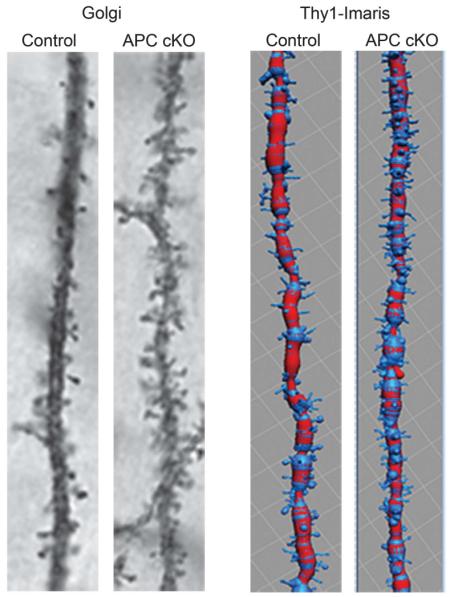
Intellectual disabilities and autism correlate with human adenomatous polyposis coli (APC) heterozygous gene deletions, but APC’s function in the brain is poorly defined. The article by Mohn et al., in this issue, demonstrates that APC conditional knockout (cKO) mice display cognitive impairments and autistic-like behaviors (increased repetitive behaviors, reduced social interest), compared with wild-type (WT) littermates. Additionally, APC loss leads to structural, functional and molecular changes. The micrographs above of hippocampal and cortical pyramidal neuron apical dendrites show the increased spine density and predominance of less-mature stub-shaped spines in APC cKOs, whereas mushroom spines predominate in WTs (Golgi-Cox stained brightfield images, left panels; IMARIS reconstructions of confocal stacks of apical dendrite (red) and spines (blue), right panels). APC cKOs also exhibit excessive β-catenin levels and associated changes in canonical Wnt target gene expression and N-cadherin synaptic adhesion complexes, including reduced levels of presenilin1. The data identify a novel role for APC in linking to and regulating synaptic adhesion complexes and signal transduction pathways that are essential for normal learning and behavior. For more information on this topic, please refer to the article by Mohn et al. on pages 1133–1142.


